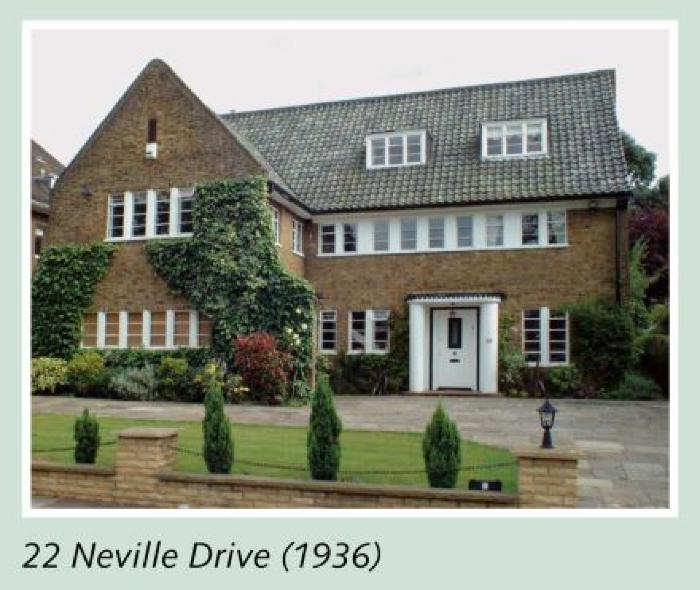To display in FULL SCREEN hover the cursor over the image above and click the top left zoom button
Cecil George Butler was born in Wellington, Shropshire on 30 March 1897.
He began his architectural training in 1919 at the Bartlett School of Architecture, and in 1920 enrolled at the Architectural Association. Butler began practice in the same year, and by 1923 was living and working in Baron’s Court, London. By 1930 he had become a fellow of the RIBA (FRIBA).
Butler was appointed Architect to the Co-Partnership Tenants’ and Hampstead Tenants’ Societies in 1922, tasked with the development of Hampstead Garden Suburb. While this particular role lasted only until 1933, Butler worked on the Suburb until 1938, designing some 640 buildings.


Among Butler’s most notable works on the Suburb is Lyttelton Court (1930). This striking design combines Art Deco doorways with brickwork redolent of the Arts and Crafts movement, exhibited in its recessed balconies and diagonal chimneys. His houses at Northway, Middleway and Southway, designed between 1923 and 1927, complement the buildings of J.C.S. Soutar, the Trust’s consultant architect, and demonstrate a sophisticated understanding of context.
The architect and historian Mervyn Miller has argued that Butler’s best work includes the flats of Midholm Close (1927) and Neale Close (1929). Butler designed large numbers of houses in the north of the Suburb, in Hill Top, Brim Hill, Brookland Rise, Gurney Drive, and Ossulton Way, as well as shops and flats in the Market Place.


In the late 1930s Butler took up partnership in Shropshire as Shayles, Butler and Dilke. He worked in the Lands Department of the War Office during the Second World War.
Butler died after an operation, aged 50, on 30 April 1947, and was cremated in Golders Green. During his involvement in the Suburb, Butler lived at 12a North End Road, followed by 221 Hampstead Way, and after that, 10 Milton Close.